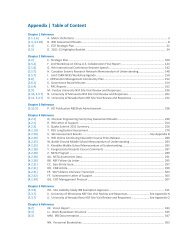Fries
Fries
Fries
Create successful ePaper yourself
Turn your PDF publications into a flip-book with our unique Google optimized e-Paper software.
ICAME Journal No. 34possible a valid prediction of the regular recognition responses that thepatterns will elicit in the linguistic community.Because of the importance of listener response to his whole enterprise, heregarded a corpus not merely as a set of forms which had been uttered, but alsoas a source of information concerning the participant reactions engendered bythose forms in the interaction. This aspect is explicitly mentioned in his methodologicaldiscussion in The structure of English, where one of the steps of analysishe describes is to group the single free utterances “… in accord with theresponses that followed them. All the evidence that appeared in our records concerningthe nature of the response was used for this purpose.” (1952: 41) 6 .Given his goals for linguistics, it is no wonder that one of his majorcriticisms of traditional grammar was that it aimed primarily at providing ataxonomy of the language (e.g. classifying sentences into questions, statementsand commands, etc. and words into the eight parts of speech – nouns verbs,adjectives, etc.). As he often said, traditional grammar does not address thequestion of how listeners know that a given sentence is a statement, commandor question.He even considered the goal of transformational grammar described inChomsky (1957: 13) to be a taxonomic goal:The fundamental aim in the linguistic analysis of a language L is toseparate the grammatical sequences which are the sentences of L fromthe ungrammatical sequences which are not sentences of L and tostudy the structure of the grammatical sequences.Clearly, advocates of the formalist approach, even in its later more sophisticatedforms, never really addressed his issue of describing the signals in the languagethat cued listeners to interpret the language the way they did. From his point ofview, formalist descriptions of languages which approached the task by firstequating a language with a set of sentences, and then trying to describe that setby pointing out parallels (even very abstract and sophisticated parallels) amongthe various members of that set were simply being taxonomic. Certainly the goalof classifying sequences into ‘sentence’ vs. ‘not sentence’ is at heart taxonomic.But further, simply saying that a certain surface structure (and wording) wasrelated to a particular deep structure (and interpretation) did not address, in<strong>Fries</strong>’s eyes, the core issue of describing the aspects of the wording that cued listeners,in the stream of speech, that that particular wording was to be interpretedin a particular way.96








